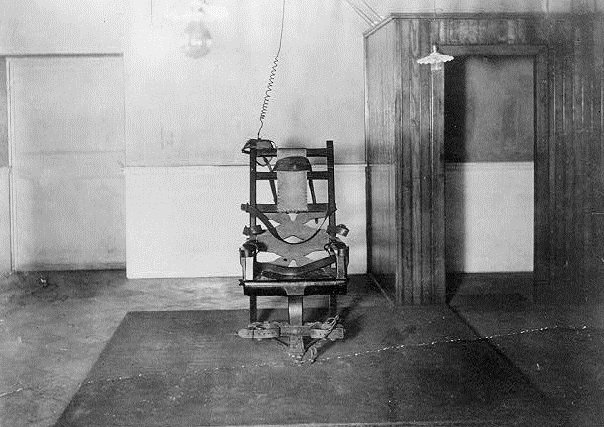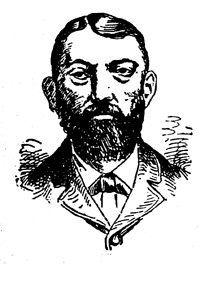Hello friends, in this present publication I will talk about one of the oldest methods in history, "the electric chair" and that this method is currently in force in many parts of the world including the United States, today I want to start with This is a series of publications related to the different practical methods that man uses to meet the needs of society and that in some cases these methods become rigorous as the history itself indicates, I invite you to observe this interesting post.
The electric chair is a machine that was used for the application of capital punishment. It was used mainly in the United States since August 6, 1890, when the first execution was made with this method.
Since the 1970s it has ceased to be the primary method of execution in that country, although some states provide for its use as an option subject to the choice of the accused. On February 8, 2008, its use in the state of Nebraska was prohibited

History

It was invented by Harold P. Brown, an employee of Thomas Edison, hired to investigate the issue of electrocution for the development of the electric chair. As Brown worked for Edison and Edison promoted Brown's work, the invention of the electric chair is often mistakenly attributed to Edison himself. Brown's design was based on alternating current (AC), which appeared as the alternative to direct current (DC) developed by Edison but less efficient when it comes to transportation. The previous thing was developed in the context of the war of the currents, like an attempt on the part of Edison to discredit the alternating current (AC) of Nikola Tesla.
In 1886 the state of New York established a committee to determine a new system of execution that was more human and that replaced the gallows that was the method used until then. Neither Edison nor Westinghouse wanted their electrical systems to be chosen, because they feared that consumers would not want to have the same type of electric current that used to kill human beings in their home.
To prove that alternating current was most useful for executions, Brown killed several animals, including a circus elephant called "Topsy", during the tests he did of his prototypes. He also executed several animals in front of the press as a way to ensure that alternating current was associated with electrocution. Then the word "electrocution" was created. Most of his experiments were carried out in Edison's laboratory in 1888.
Apparently the experiments paid off and the AC electric chair was adopted by the committee in 1889.
The first executed with the electric chair was William Kemmler; the execution took place in Auburn Prison in New York on August 6, 1890. The first woman executed was Martha M. Place, in Sing Sing Prison on March 20, 1899. Ohio adopted the electric chair in 1897 , Massachusetts in 1900, New Jersey in 1906 and Virginia in 1908. In a short time, it became the most widespread method of execution in the United States, and it was until the mid-1950s, when it was ousted by the gas chamber. , which began to operate in the 1950.
A mark was set on a July night in 1929 when seven people were executed one after the other at the Kentucky State Penitentiary in Eddyville, the largest mass electrocution in the country's history.
Executed by electrocution were Sacco and Vanzetti, Julius Rosenberg, Ethel Rosenberg, Ted Bundy, Willie Francis and Leon Czolgosz.
The electric chair was no longer used when lawmakers sought other cheaper and more practical methods of execution in favor of lethal injection. Several states still allow the condemned to choose between electrocution and lethal injection; however, electrocution is rarely chosen. The electric chair was used on September 12, 2007, at 6:25 GMT, when Daryl Holton, 45, was electrocuted in Tennessee by preferring this method of execution than lethal injection, this being the first electrocution in the been in 47 years. To date, the last execution, that of killer Robert Gleason, took place on January 16, 2013 in the state of Virginia.

Method
The convicted prisoner was tied to the chair, with an electrode on his head and another on his leg. At a minimum, two electric shocks were applied for several minutes depending on the person. The initial voltage of plus or minus 2 kV served to break the initial resistance of the skin and cause unconsciousness (or, at least, that was intended). Then the voltage was lowered, reducing the intensity of current flowing and thus prevent the prisoner from burning. Circulating a current flow of 8 A, reaching the body of the prisoner temperatures of 60 ° C. The electric current caused serious damage to the internal organs.
In principle, unconsciousness must occur in a fraction of a second. However, there are reports of victims whose heads burned. In other cases the transformer burned, which means leaving the prisoner screaming in pain on the floor of the execution room while arranging the chair. In 1946, the electric chair did not kill Willie Francis, who shouted "Stop! Let me breathe!" while he was executed. The reason was that the chair had been improperly installed by an inebriated assistant. The case was brought to the Supreme Court of Justice of the United States, (Francis v. Resweber), 329 U.S. 459 (1947). The defendant's lawyers argued that Francis was executed as ordered by the court ruling; However, he did not die, but the sentence was still fulfilled. The argument was rejected and Francis returned to the electric chair the following year.
In any case, even when the execution is carried out correctly, some skin is always burned and it is unpleasant for the guards to have to separate the burned skin from the belts of the chair. The inmate loses control of his muscles after the first electric shock and may end up defecating or urinating. This led to a refinement in the most modern chairs.